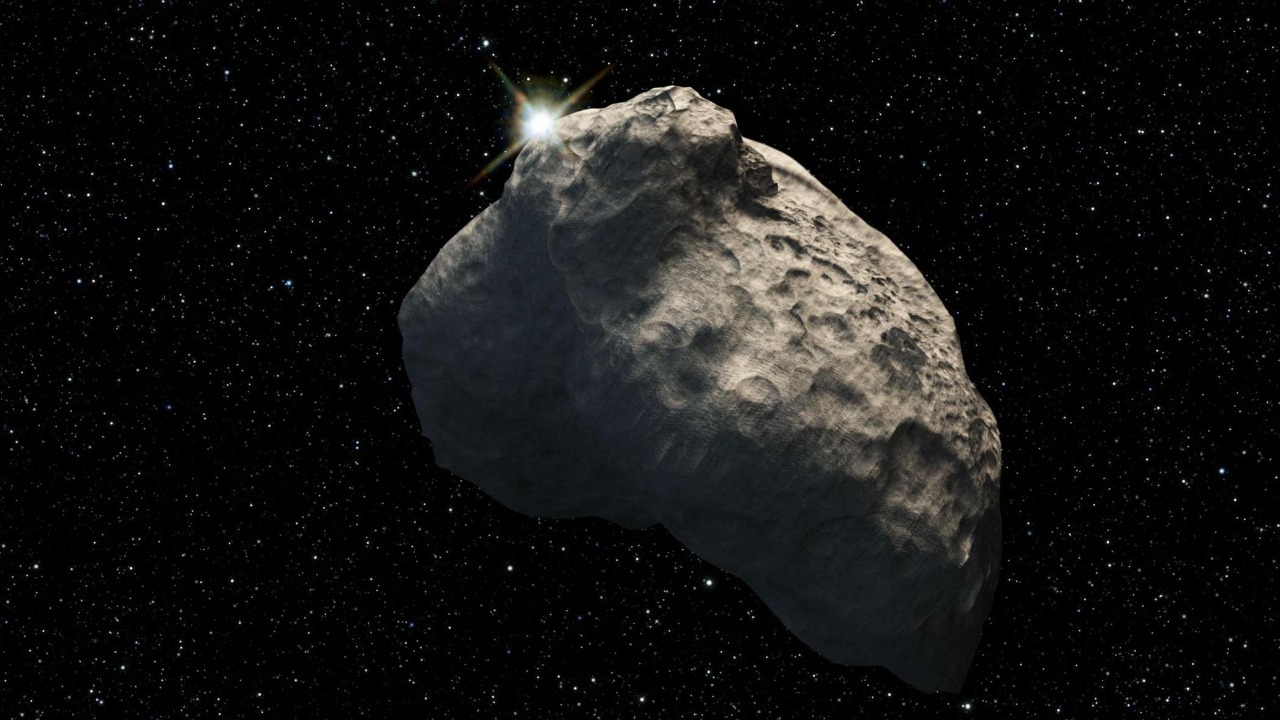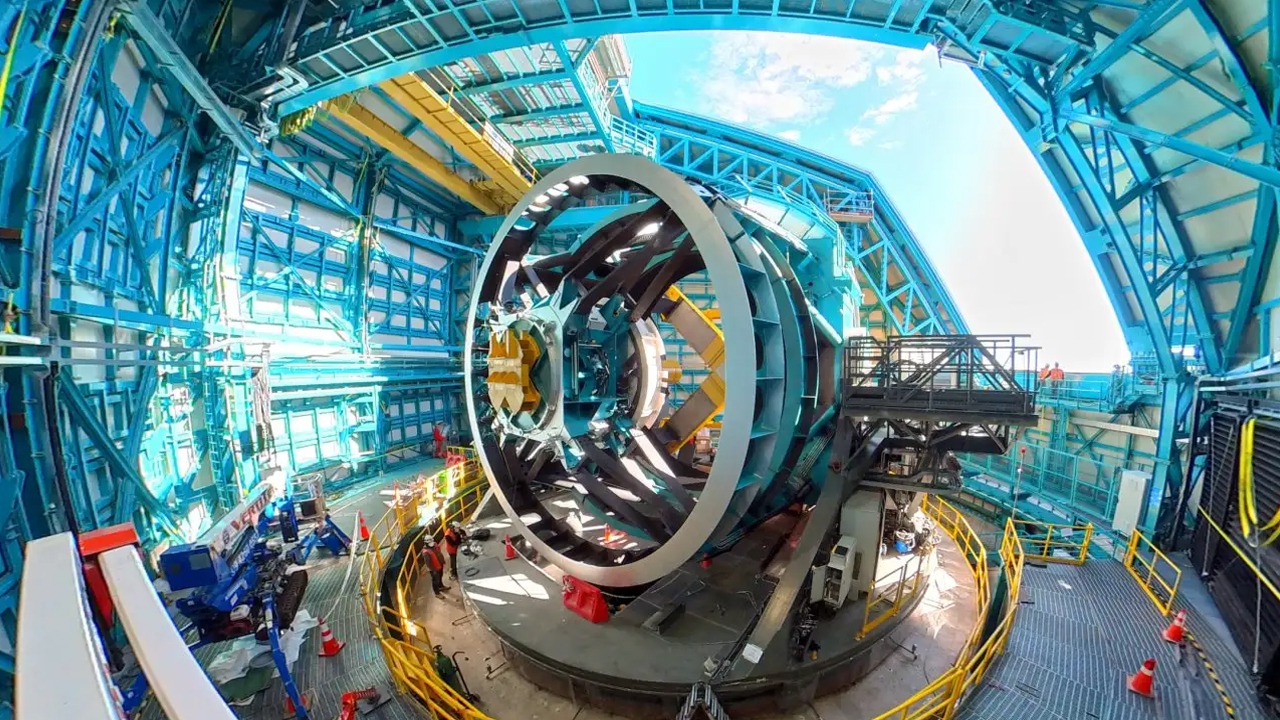
Astronomers have recently detected a colossal object at the edge of our solar system, sparking excitement and curiosity within the scientific community. This discovery could provide crucial insights into the outer regions of our solar system and the mysterious forces at play. As researchers delve deeper into the nature of this object, questions arise about its origin, composition, and potential implications for our understanding of the solar system.
The Discovery: A New Frontier

In an astronomical breakthrough, scientists have identified a massive object at the solar system’s fringe using cutting-edge technology. The object was spotted through a combination of telescopic imaging and data analysis from various observatories worldwide. The detection was facilitated by advanced techniques such as infrared scanning and gravitational analysis, which allowed astronomers to pinpoint the object’s location and movement with remarkable precision.
The scientific community reacted with a mix of enthusiasm and intrigue upon hearing of the discovery. Such findings are rare and can lead to significant advancements in our understanding of the cosmos. This particular discovery is noteworthy because it challenges existing notions about the solar system’s boundaries and the types of bodies that might inhabit its outermost regions. Comparatively, previous discoveries of distant celestial bodies have been less conclusive due to the limitations of older technology and observational methods.
Characteristics of the Mysterious Object

Preliminary analyses suggest that the object is immense, potentially rivaling the size of some dwarf planets. Its exact dimensions are still under investigation, but estimates suggest it could be hundreds of kilometers across. Composed of a mixture of ice and rock, the object resembles other known trans-Neptunian objects yet stands out due to its size and location. These characteristics have led scientists to hypothesize about its composition, suspecting it may contain materials that are rare or even unknown within the inner solar system.
The object’s orbital path is another area of active research. Early observations indicate that it follows a highly elliptical trajectory, taking it far beyond the orbit of Pluto and into uncharted areas of the solar system. This peculiar orbit raises questions about the object’s origin. Some theories suggest it might be a remnant from the early solar system, while others propose it could have been captured from another star system during a close stellar encounter. Understanding its path could provide valuable insights into the dynamic processes that govern the solar system’s evolution.
Implications for the Solar System

This discovery has significant implications for current models of the solar system. Established theories about the solar system’s structure and formation may need revision to accommodate this new data. The presence of such a large object at the periphery challenges assumptions about the distribution of mass and materials beyond Neptune. It also supports the idea that the solar system might be more complex and diverse than previously thought.
Furthermore, this finding sheds light on the Kuiper Belt and regions beyond, potentially offering clues about the formation and evolution of these distant areas. The discovery may also have implications for the ongoing search for the hypothetical Planet 9, a proposed ninth planet that some astronomers believe exists beyond Neptune. The presence of such a large object could influence theories about the gravitational forces that might indicate the presence of additional planets.
Technological and Methodological Advances

The detection of this object was made possible by significant advancements in astronomical technology and methodology. Modern telescopes equipped with state-of-the-art sensors and imaging capabilities have revolutionized our ability to observe distant objects. Techniques such as adaptive optics and digital signal processing have enhanced the clarity and accuracy of observations, allowing astronomers to detect faint and distant objects with unprecedented detail.
International collaboration played a crucial role in this discovery. By pooling resources and expertise, teams from around the world were able to confirm and study the object in detail. Such collaborations exemplify the importance of global scientific partnerships and shared knowledge. Looking ahead, future advancements in technology, such as more powerful telescopes and space-based observatories, promise to further expand our understanding of the solar system’s outer reaches.
The Road Ahead: Next Steps in Exploration

With such a groundbreaking find, the scientific community is eager to learn more about the object and its surroundings. Several missions and studies are already in the planning stages, aimed at gathering more data and refining our understanding of this enigmatic body. These efforts may include sending spacecraft to observe the object up close or deploying advanced telescopes to monitor its movements over time.
Beyond immediate research, this discovery raises broader scientific questions that could drive future exploration. What other unknown objects might reside at the solar system’s edge? How do these bodies interact with each other and with the rest of the solar system? Addressing these questions will be key to developing a more comprehensive picture of our cosmic neighborhood.
Public interest in the discovery is also growing, as people worldwide are captivated by the prospect of uncovering new secrets about the universe. Educational initiatives and outreach programs aim to engage the public, fostering a deeper appreciation for astronomy and the ongoing quest to explore the unknown. Such involvement not only enriches our understanding but also inspires future generations of scientists and explorers.
For further reading, explore more about how interstellar objects are identified or delve into the potential implications for Planet 9 search efforts.